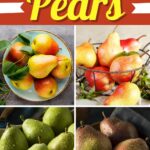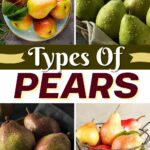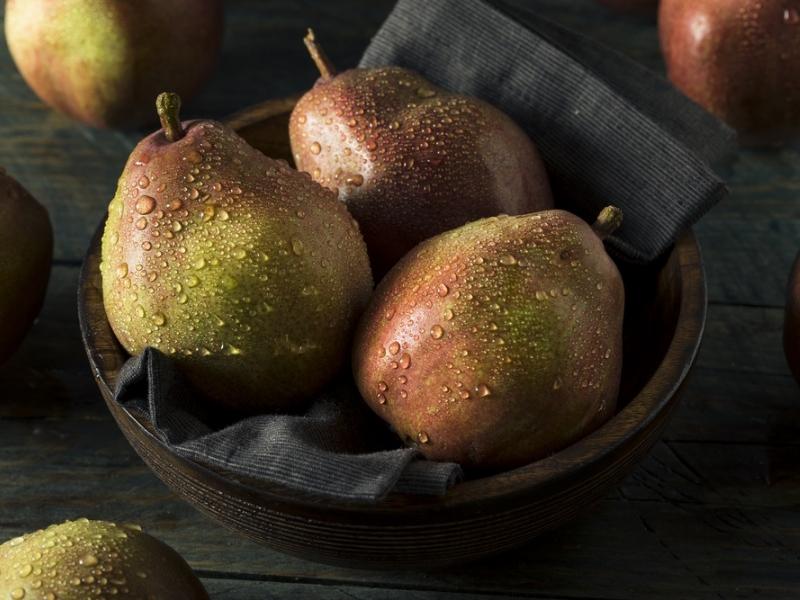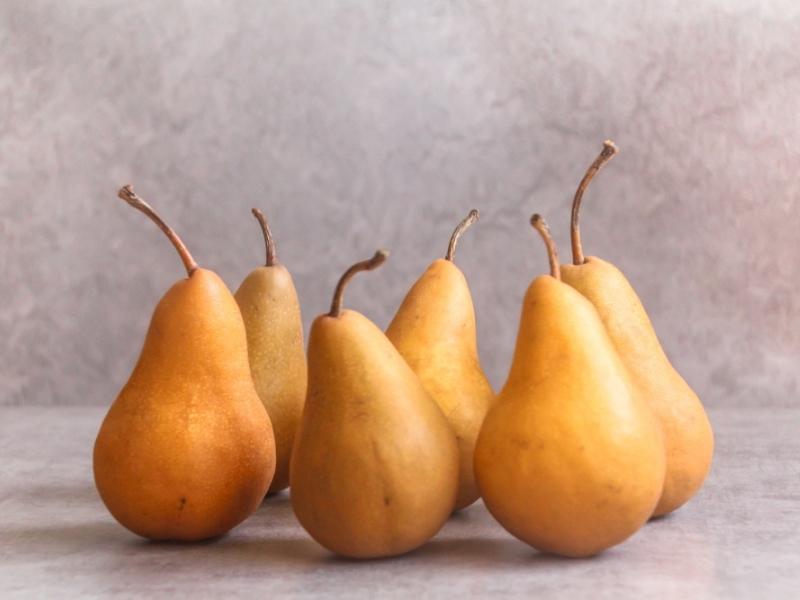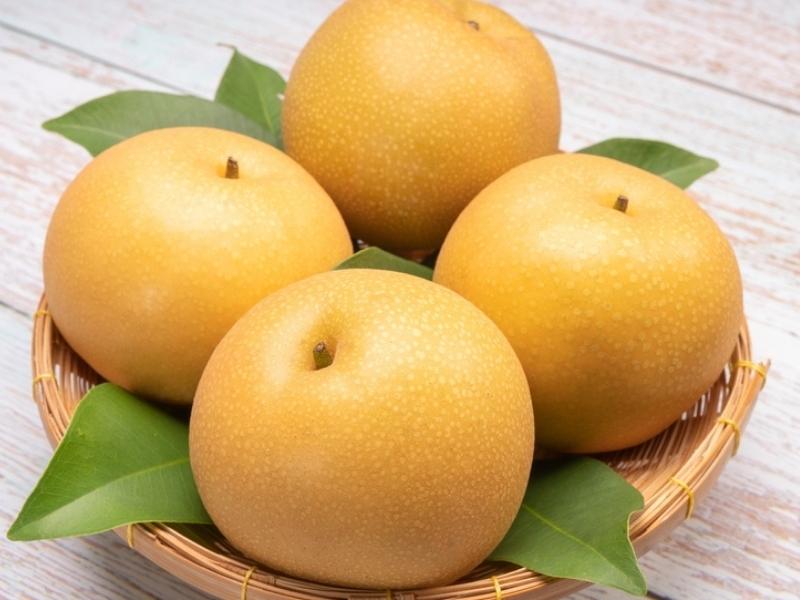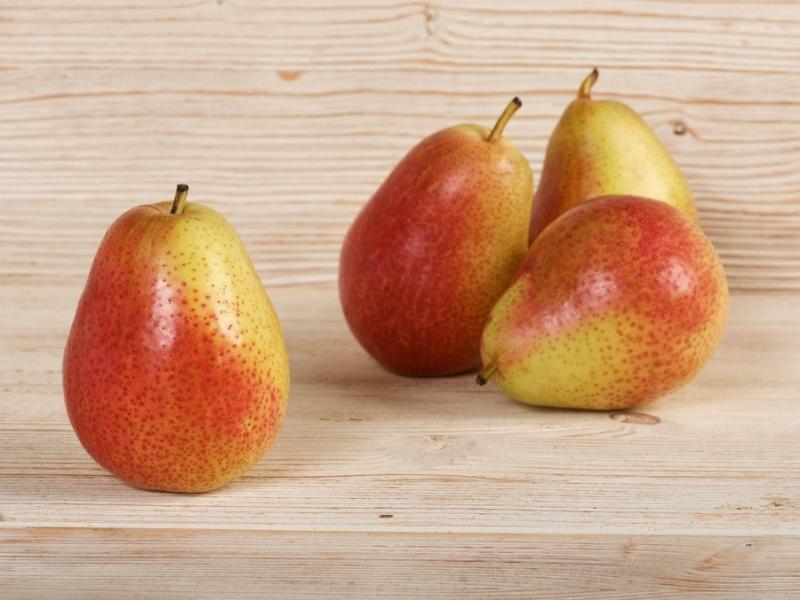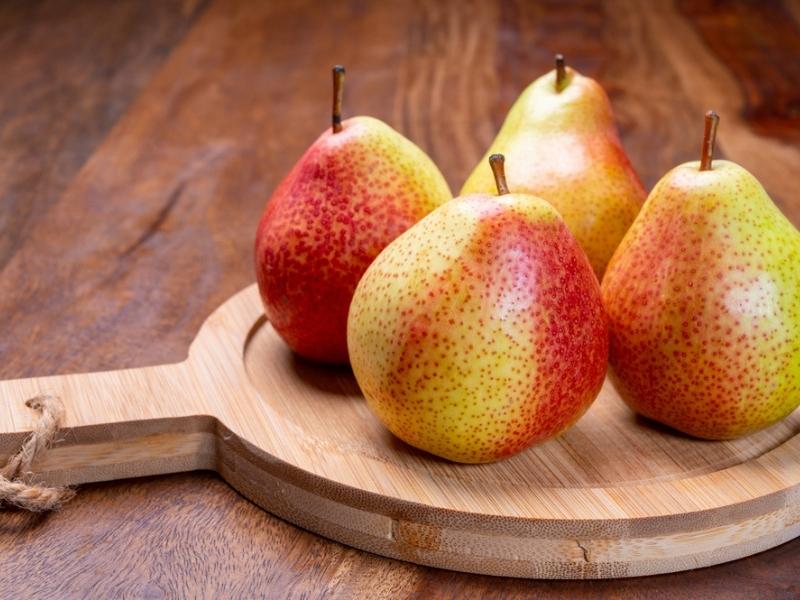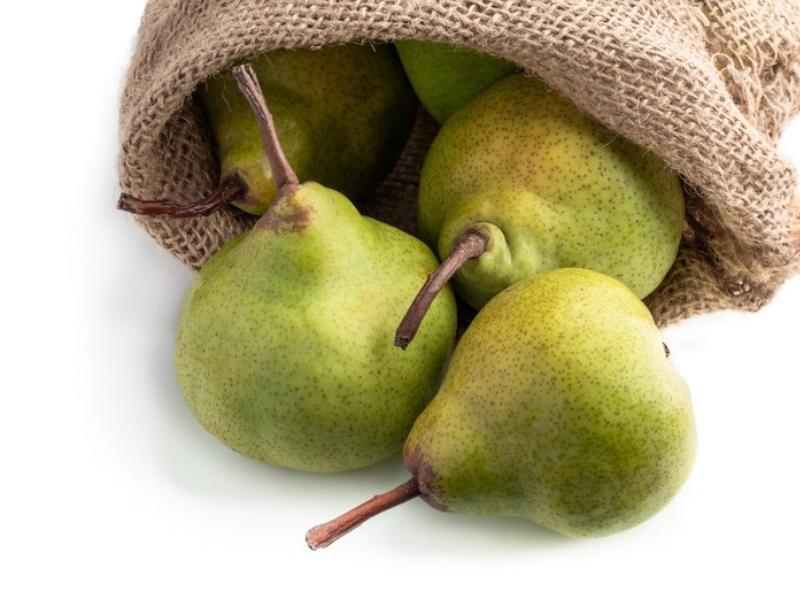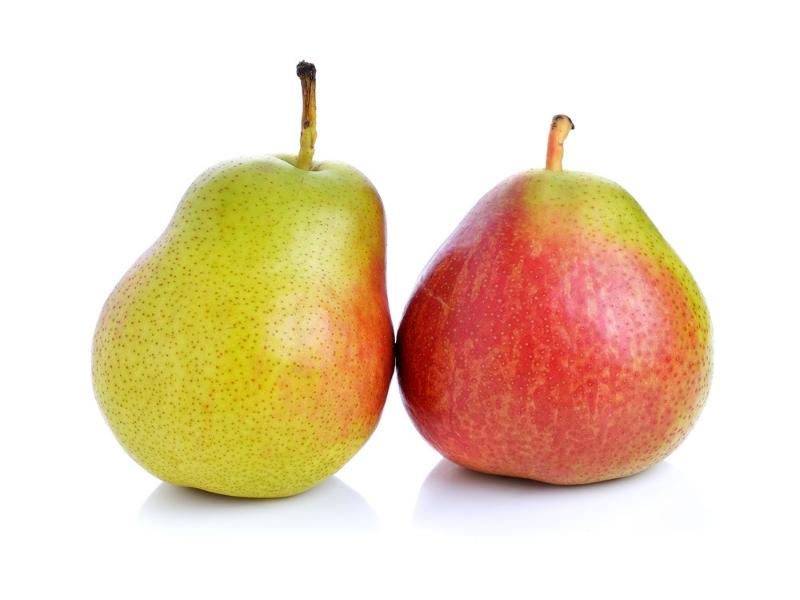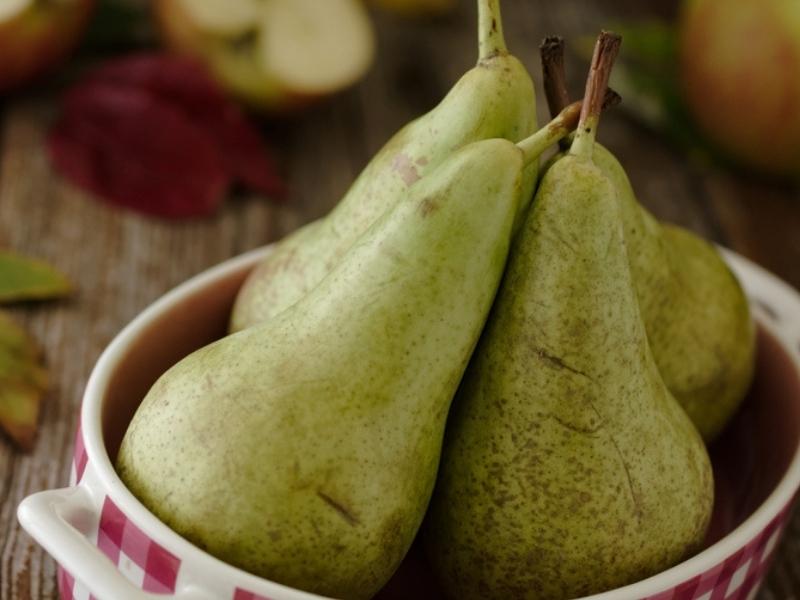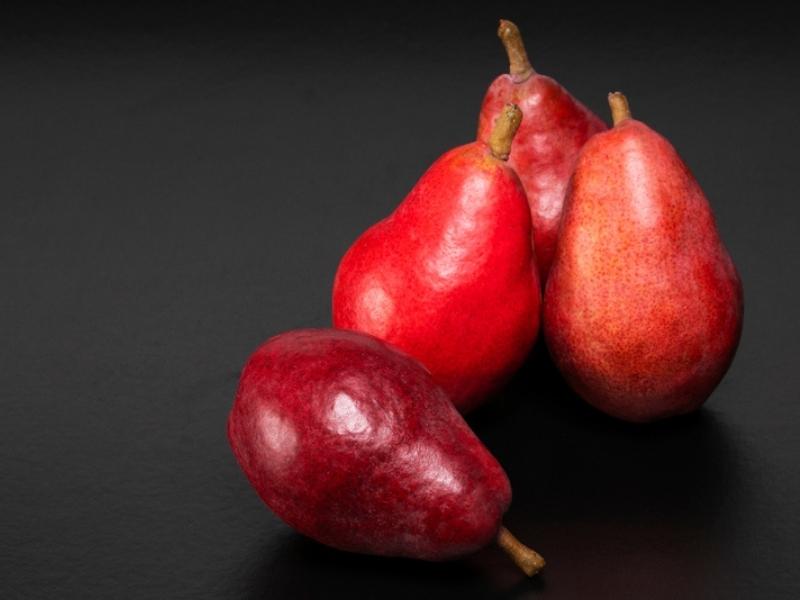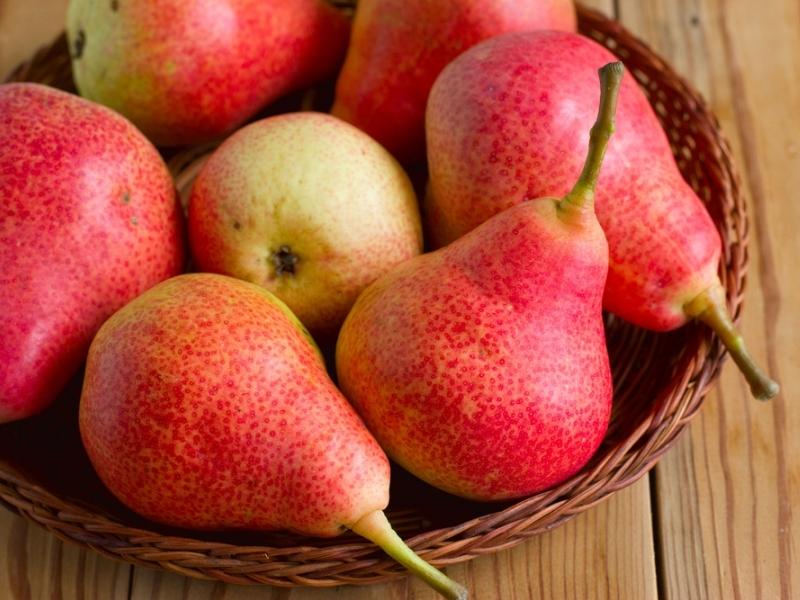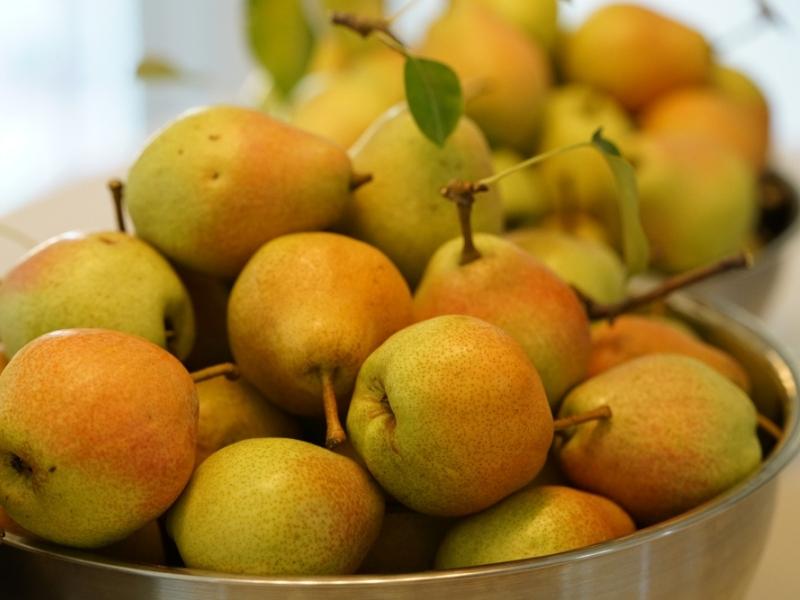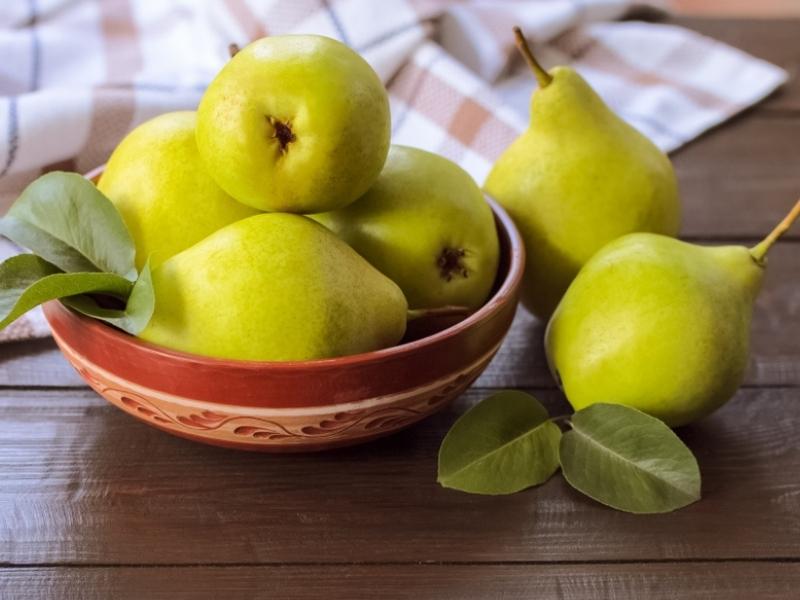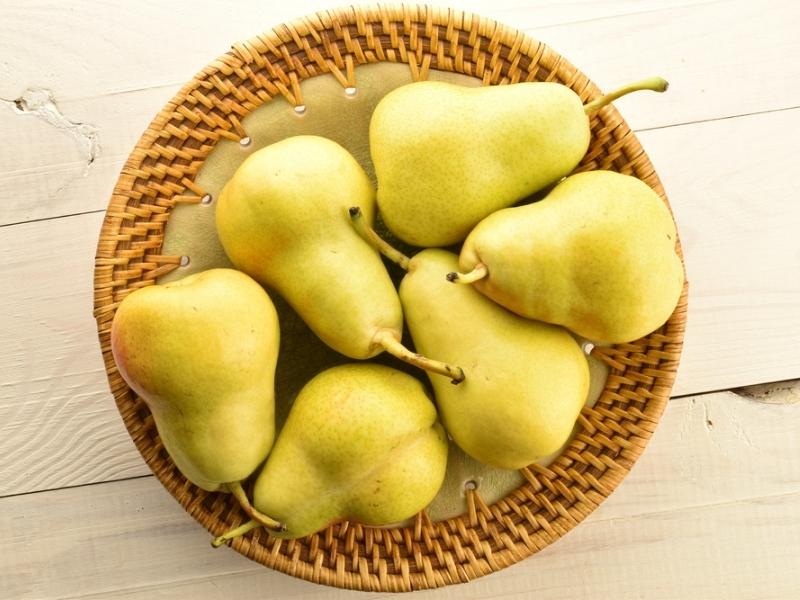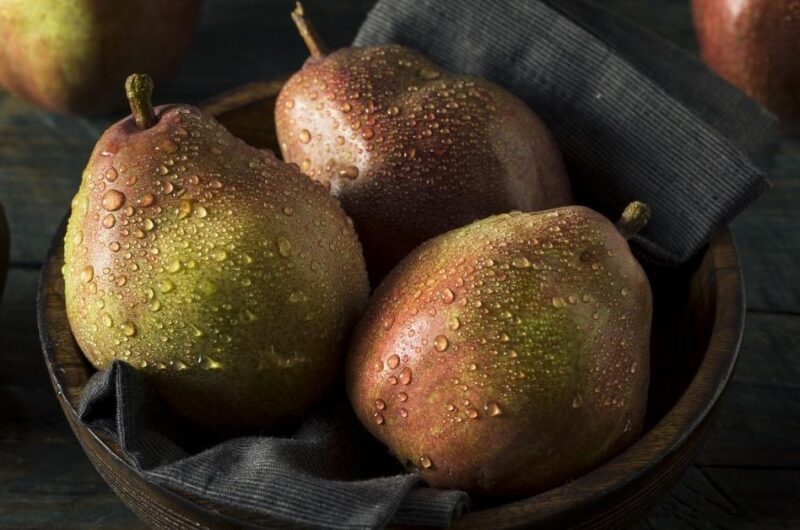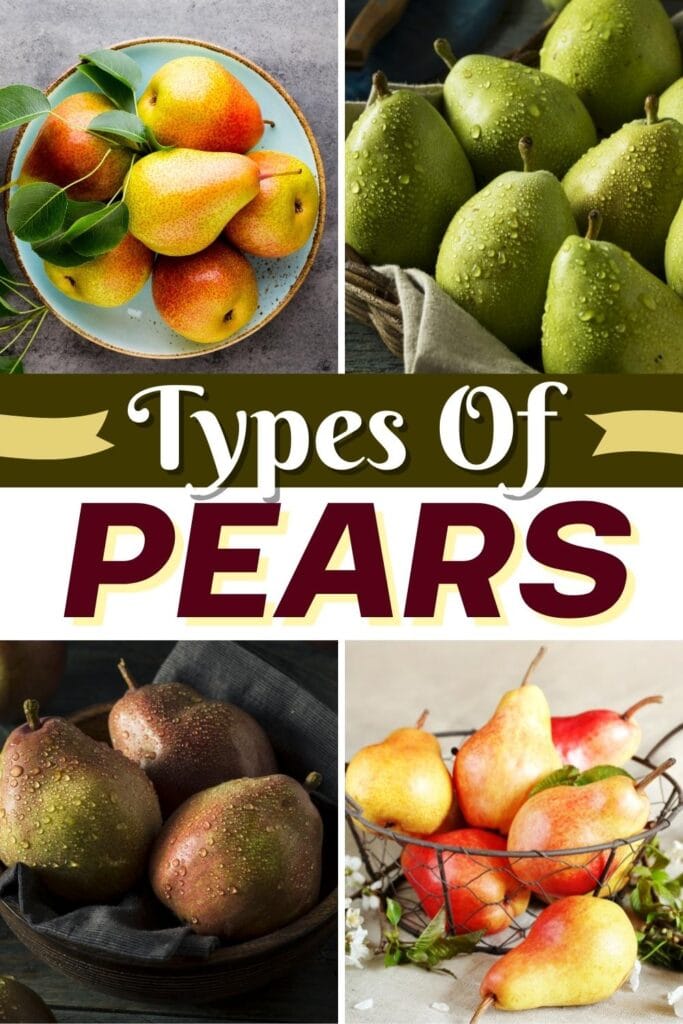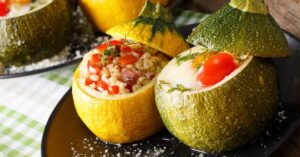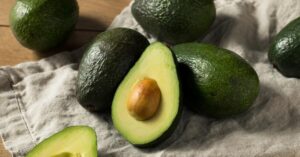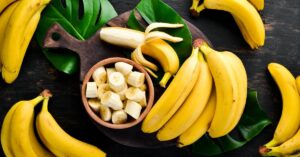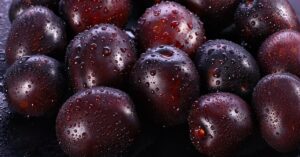Pears can be enjoyed in so many ways. Most commonly, they’re eaten as a fresh snack, similarly to an apple or a peach. However, you can grill, poach, roast, can, and preserve pears for all kinds of delicious delights. There are so many types of pears with so many different flavors, textures, and colors. It may seem hard to know which one is best for which dish. I hope you can use these types of pears to make your new favorite snack or recipe.
17 Types of Pears
Pears are native to so many areas of the world. You’ll find European, Asian, or American pears, and more! They all have different qualities but they’re all so yummy and versatile. Here’s a look at 17 different types of pears.
1. Anjou Pears (Green & Red)
There are two varieties of Anjou pears: red and green. Green Anjou pears are more common and popular than red ones. Anjou pears get their name from the Anjou region of France. As they migrated throughout the world, they were also called Beurré d’ Anjou. You might also see them as d’ Anjou pears. They’re egg-shaped rather than having more of a neck at the top. They’re often described as squat and short. Anjou pears are plump with smooth skin. The flesh of the Anjou pears is juicy and firm. They’re sweet and delicious when eaten raw.
2. Bosc Pears
Bosc pears are one of my favorites! The flavor of Bosc pears is very sweet and almost honey-like. This makes them wonderful for baking, and they’re great for adding sweetness to salads and sandwiches, too. The origin of the Bosc pear is unclear. Some say it was Mr. M. Bosc in Belgium, while others believe it started growing in France. Bosc pears often have a distinct appearance. The skin of some fruits can develop microscopic cracks. This is called russeting. Some Bosc pears have a lot of russeting. Another wonderful thing about Bosc pears is that they’re sweet and juicy even before they’re fully ripe.
3. Asian Pears
Asian pears are often identifiable by their super crisp texture. When you bite into one, you’ll find that it’s very similar to an apple. Asian pears also look most similar to apples than other pears. In the U.S., Most Asian pears are tan in color with little to no shine. However, this variety of pear comes in many different colors and textures. Due to their crisp texture and sweet flavor, they’re the perfect pears to snack on or use raw in salads. They don’t usually do as well in baked dishes due to their higher water content.
4. Bartlett Pears/Williams Pear (Red & Yellow)
Bartlett pears can be found with both yellow and red skin, which is usually delicate, yet thin. They also have the signature pear or “bell” shape. In grocery stores, you may also see them being called Williams pears. They’re a type of European pear and are harvested in the late summer and early fall. These juicy and sweet pears have a buttery texture and are wonderful for snacking. They bake well but will fall apart under high heat, so they’re not ideal for grilling. If you’re canning some fruit, Bartlett pears would be a fantastic choice!
5.Forelle Pears
Forelle pears are easy to spot due to their very small size. They also have a distinct oval shape and their skin is smooth with red and green freckles. As Forelle pears ripen, the skin changes to a darker red so it’s easy to tell when they’re ready to eat. These pears are one of the juiciest pears around and they are so sweet. Kids adore these fruits because they are so small, cute, and sweet! They make a wonderful snack. Forelle pears are another European variety of pear and they’re so easily loved.
6. Seckel Pears
Seckel pears are small and sweet. Their origin is thought to be from Pennsylvania, and their trees look very similar to apple trees. Seckel pears are also known as sugar pears or candy pears. They’re usually only about three inches or less in length, so they’re easy to pick out of a crowd. These pears are very sweet and have a crispy texture. The skin is very smooth and usually a red-orange color. Seckel pears are great for preserves but can also be used in a variety of recipes and eaten raw.
7. French Butter Pears
French butter pears get their name from the fact that they’re often used to make pear butter (similar to apple butter). They’re green in color, and when they ripen, some turn beautifully golden. These pears have a teardrop shape with a large base and a short and straight neck. The stem is also a brownish-green color. When it comes to flavor, these pears are a bit lemony and might be pretty sour if eaten raw. When they’re ripe, they are very juicy and tender. French butter pears also have a slightly rosy floral scent. Other than making pear butter, these pears are wonderful when eaten raw.
8. Comice Pears (Red & Green)
Comice pears are French and are also known as Doyenné du Comice. It can also be noted that the Comice pear tree is pretty self-sufficient and once planted, can grow without much help. Comice pears are large with greenish-yellow skin. They often have a red blush and can be seen with a bit of russeting on the skin. They’re also very delicate and bruise easily. These fruits have a lovely flavor. They’re sweet, fruity, and juicy. Comice pears make a great snack. I think these pears are one of the best for eating raw. Plus, when stored cold, they can last up to 3 months.
9. Concorde Pears
Concorde pears are an English variety and are a hybrid of the Conference and Comice pears. Concorde pears have characteristics of both pear parents. This variety of pears has an elongated shape with green skin and a hint of blush. Concorde pears turn more yellow as they ripen and may have some russeting. Concorde pears have a lovely sweetness and even a hint of vanilla flavor. They’re crisp, smooth, and juicy. These pears will keep their shape when cooked but are also great for snacking on raw. Because of their dense texture, they’re fantastic for tarts and poaching.
10. Starkrimson
Starkrimson pears are gorgeous. They can be easily identified by their bright red skin. You might also see them as Red Clapp’s pears. These beautiful pears are actually the result of a genetic mutation. A pear tree in Missouri started growing red pears on one of its branches, and the Starkrimson pear was born. In addition to its bright color, the Starkrimson pear is super juicy. It’s one of the juiciest pear varieties and because of this, makes an incredible raw snack. Starkrimson pears can be used for baking or cooking. But they have a high water content, so they might not be great for some dishes. However, they do add lovely color to salads.
11. Taylor’s Gold
Taylor’s gold pears are a lovely golden-brown color. They aren’t as common in the U.S. because they’re difficult to grow in some states. These are more commonly found in New Zealand. Taylor’s gold pears are very tender. Some say they even melt in your mouth as you bite into them. It’s possible that these pears are a relative of the Comice pear because of the smooth texture. These pears are sweet and delicious. They make a wonderful raw snack and can also be used for jams or jellies. They don’t hold their shape very well under high heat.
12. Summercrisp Pear
Summercrisp pears are just as pleasant as their name is. They’re beautiful with striking colors. These pears have a bright green color with a vivid red blush. They range from small to medium in size and are harvested in late August. Summercrisp pears are also sweet and crisp, as the name suggests. They’re actually best when eaten before they ripen. Introduced by the University of Minnesota, these pears are native to the U.S. The flowers of the tree are gorgeous and the fruit is just as beautiful as it tastes. Eat these pears raw or use them for preserves.
13. Kieffer Pear
Kieffer pears are a bright yellow hybrid of Sand pears and Bartlett pears that is native to the states. They’re harvested from September to the middle of October. The shape of a Kieffer pear is very typical of a common pear. They have a wide rounded base and taper to a small rounded neck. Kieffer pears are mildly sweet and with a musky aroma. They also have a coarse texture that’s firm and crisp. Chilling these pears allows them to ripen over time before they’re eaten. These fruits are ideal for raw snacking, canning, or baking.
14. Aurora Pears
Aurora pears are another American variety related to Bartlett pears. Aurora pears have smooth yellow skin that can sometimes have tan or gray mottling. They can also be found with some rosy blush on the skin. These pears have an excellent storage life so they will last all through winter. Aurora pears have a terrific flavor. They’re sweet, juicy, and aromatic. When you bite into them, they may seem to melt in your mouth since the texture is very fine-grained. If you’re looking for a fresh snack, Aurora pears are perfect. They make delicious desserts and can be used for baking or canning.
15. Baldwin Pear
Baldwin pears are another lovely pear variety that everybody will love. These fruits have a yellow skin with pink or red blush. They’re usually medium in size and become ripe in early fall. The Baldwin pear tree benefits from cross-pollination, and it can yield even better fruit. Baldwin pears are also a semi-hard pear that is perfect for canning or snacking. You can use these pears for canning and dessert, and they’ll make a fantastic treat.
16. Hood Pear
Hood pears are wonderful for warmer climates. They don’t require as much chill time as other pears, so they’re the preferred pear variety for areas closer to the equator. Hood pears are greenish-yellow in color and are oval-shaped. They have a mildly sweet flavor that is very refreshing. The texture of the Hood pears almost melts in your mouth but has a bit of crispness to it. Due to their preference for warm climates, they are also more of a summer fruit. They’re ready for harvest from mid to late July. Hood pears are an excellent snack, and they’re also great for canning.
17. Pineapple Pear
Pineapple pears are a hybrid European and Asian pear. They have a distinct flavor and are one of the most unique varieties in my opinion. They are large and rectangular-shaped pears with golden skin. They usually have some russeting and a light rosy blush. These pineapple pears are available in mid-July and like the Hood pears, don’t need very much chill time. As its name suggests, pineapple pears have some pineapple flavors with hints of apple as well. These fruits are refreshing and delicious. Pineapple pears will make a fantastic snack. You can also use them for canning or to make pear butter and you will not be disappointed. Click on a star to rate it!
Average rating 5 / 5. Vote count: 1 No votes so far! Be the first to rate this post.
Share on social media: Let us improve this post!
